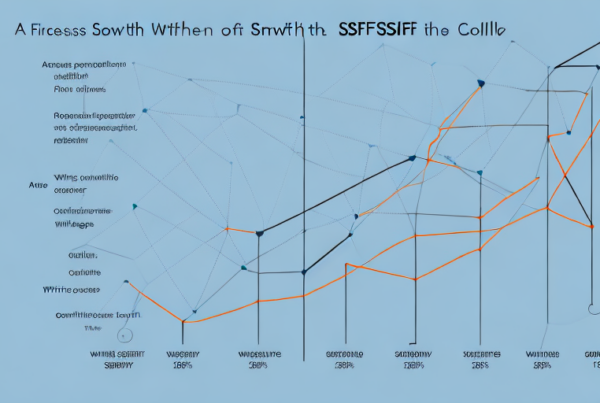In recent years, the world of self-managed super fund (SMSF) management has undergone significant changes. With advancements in technology, regulatory updates, and shifting attitudes towards retirement planning, it’s no wonder that SMSFs have become an increasingly popular choice for those looking for greater control over their retirement savings. In this article, we’ll take a closer look at the ins and outs of SMSFs, exploring the benefits, responsibilities, and risks associated with these funds, as well as recent regulatory and technological developments. We’ll also examine the role of financial advisors in SMSF management, helping you to select the right advisor and understand their role and services.
Understanding Self-Managed Super Funds (SMSFs)
What is a Self-Managed Super Fund?
First things first, let’s define what we mean by an SMSF. Essentially, an SMSF is a type of superannuation fund in which members are also the trustees, meaning they are responsible for managing the fund. This gives members greater control over their retirement savings, allowing them to make investment decisions and choose the fund’s assets. SMSFs can have up to four members, each of whom must be trustees, and must comply with Australian Taxation Office (ATO) regulations.
Benefits of SMSFs
One of the key benefits of an SMSF is the ability to choose the fund’s investments. This gives members greater flexibility and control over their assets, and allows them to tailor their investments to suit their individual goals and risk appetite.
For example, if a member has a strong interest in property investment, they may choose to invest in a property through their SMSF. Alternatively, if a member is more risk-averse, they may choose to invest in more conservative assets, such as cash or fixed interest investments.
Another benefit of SMSFs is the potential for tax advantages. SMSFs can provide members with greater control over their tax position, as they can choose when to buy or sell assets to manage their capital gains tax liabilities. Additionally, SMSFs can provide members with access to tax-effective income streams in retirement.
Furthermore, SMSFs can be a useful estate planning tool. Members can nominate their preferred beneficiaries and ensure that their assets are distributed in a tax-efficient manner after their death.
Responsibilities and Risks of SMSFs
While SMSFs can offer many benefits, they also come with certain responsibilities and risks. As trustees, members are responsible for ensuring that the fund complies with ATO regulations and legislation.
This includes keeping accurate records, preparing financial statements, and submitting tax returns. Failure to comply with these requirements can result in penalties and legal action, so it’s essential to take these responsibilities seriously.
Additionally, members must be aware of the risks associated with investing. SMSFs are not guaranteed to make a profit, and members may experience losses as a result of market volatility or poor investment decisions.
It’s important to consider these risks when deciding whether an SMSF is the right choice for you. Seeking professional advice from a financial planner or accountant can help you make an informed decision about whether an SMSF is suitable for your needs.
Recent Regulatory Changes Impacting SMSFs
Legislative Updates
In recent years, there have been several legislative updates that have impacted SMSFs. One notable change is the introduction of the SuperStream system, which requires employers to make superannuation contributions electronically. This aims to streamline the process, making it more efficient and reducing errors.
The SuperStream system has been in operation since 2014 and has been mandatory for all employers since 2016. The system works by requiring employers to make super contributions electronically, using a standard format. This means that all contributions are processed in the same way, regardless of the employer or the super fund. It also means that contributions are processed more quickly, reducing delays in the payment of superannuation benefits.
Another recent legislative change that has impacted SMSFs is the introduction of the transfer balance cap. This cap limits the amount that can be transferred into a retirement income stream, such as an SMSF pension. The cap is currently set at $1.6 million and applies to all individuals, regardless of their age or the type of retirement income stream they are receiving.
The transfer balance cap was introduced in 2017 as part of a package of reforms designed to improve the sustainability of the superannuation system. The aim of the cap is to limit the amount of tax-free retirement income that can be received by individuals, thereby reducing the cost to the government of providing tax concessions for superannuation.
Reporting Requirements
Alongside these legislative updates, there are also reporting requirements that SMSF members must comply with. This includes the reporting of contributions, benefits, and member information to the ATO. Failure to meet these requirements can result in penalties and legal action, so it’s essential to ensure that your SMSF is meeting its reporting obligations.
Reporting requirements for SMSFs include the lodgment of an annual return with the ATO, which includes details of the fund’s income, expenses, assets, and liabilities. The annual return must also include details of any contributions made to the fund during the financial year, as well as details of any benefits paid to members.
In addition to the annual return, SMSF members must also report any changes to the fund’s details, such as changes to the trustees or members, or changes to the fund’s investment strategy. These changes must be reported within 28 days of the change occurring.
Meeting reporting requirements can be complex and time-consuming, but it’s essential to ensure that your SMSF is meeting its obligations. The ATO has a range of resources available to help SMSF members understand their reporting requirements and ensure that they are complying with the law.
Technological Advancements in SMSF Management
Digital Platforms for SMSF Administration
Self-managed superannuation funds (SMSFs) are becoming increasingly popular as Australians seek greater control over their retirement savings. With technological advancements, there have been many digital platforms developed to help with SMSF management. These platforms can streamline the administration process, making it easier for members to manage their fund. They offer a range of features, such as automated reporting, investment tracking, and document storage, providing members with a more efficient and convenient SMSF experience.
One such platform is BGL Simple Fund 360, which offers a cloud-based SMSF administration solution. The platform allows members to manage their SMSF from anywhere, at any time, using their mobile device or computer. It also offers real-time data feeds, automated compliance checks, and a range of reporting options, making it easier for members to stay on top of their SMSF obligations.
Another platform gaining popularity is Class Super, which offers a range of features such as automated investment data feeds, document management, and SMSF performance reporting. The platform also integrates with a range of other software solutions, such as Xero and MYOB, making it easier for members to manage their SMSF alongside their other financial affairs.
Automation and Artificial Intelligence
Automation and artificial intelligence (AI) are also making their mark on SMSF management. AI-powered platforms can provide insights into investment performance, asset allocation, and risk management, helping members to make more informed investment decisions. This is particularly useful for those with complex investment portfolios or multiple SMSFs to manage.
One platform utilizing AI is Stockpot, which offers a range of investment tools and insights. The platform uses machine learning to analyze market trends and provide personalized investment recommendations for SMSF members. It also offers a range of portfolio management tools, such as asset allocation analysis and risk assessment, to help members optimize their SMSF investments.
Cybersecurity and Data Protection
Alongside these benefits come risks, particularly around cybersecurity and data protection. With sensitive financial and personal information stored on these platforms, it’s essential to ensure that appropriate safeguards are in place to protect against cyber threats. This includes using secure passwords, regularly backing up data, and monitoring for suspicious activity.
One platform taking cybersecurity seriously is Class Super, which offers two-factor authentication, data encryption, and regular security updates to ensure that member data is protected. The platform also offers a range of training resources to help members understand how to protect their SMSF data and stay vigilant against cyber threats.
Overall, technological advancements are transforming the SMSF landscape, providing members with more efficient and convenient ways to manage their retirement savings. However, it’s essential to remain vigilant against cybersecurity risks and ensure that appropriate safeguards are in place to protect member data.
The Role of Financial Advisors in SMSF Management
Selecting the Right Advisor
Self-managed super funds (SMSFs) can be an attractive option for those seeking greater control and flexibility over their retirement savings. However, managing an SMSF can be complex and time-consuming, requiring a significant amount of financial expertise and knowledge. For those who require assistance in managing their SMSF, financial advisors can play a key role in providing guidance and support.
When selecting an advisor, it’s important to consider their qualifications and experience, as well as their fee structure and approach to SMSF management. Look for advisors who are registered with the Australian Securities and Investments Commission (ASIC) and have experience in SMSF management. A good advisor will take the time to understand your financial goals and risk tolerance, and will work with you to develop a tailored investment strategy that aligns with your objectives.
Advisor Responsibilities and Services
Financial advisors can provide a range of services to SMSF members, including investment advice, portfolio management, and administration support. As with any financial services, it’s important to ensure that you understand the services being provided and any associated costs. A reputable advisor will provide clear and concise information about their services and fees, and will work with you to develop a transparent and fair fee structure.
Additionally, advisors have certain responsibilities when working with SMSF members. They must comply with regulatory requirements, including the Superannuation Industry (Supervision) Act 1993 and the Corporations Act 2001, and must act in the best interests of their clients. This means that they must provide advice that is appropriate for your individual circumstances, and must not recommend products or services that are not in your best interests.
Fee Structures and Transparency
Fee structures can vary between advisors, with some charging a percentage of assets under management and others charging a flat fee. Be sure to understand the fee structure and any associated costs, including transaction fees and ongoing management fees. A good advisor will be transparent about their fees and services, providing clear and concise information to help you make an informed decision.
It’s also important to consider the value that an advisor can provide beyond their fees. A skilled advisor can help you navigate complex investment markets, identify opportunities for growth, and develop a long-term investment strategy that aligns with your financial goals.
Ultimately, the right financial advisor can be an invaluable partner in managing your SMSF and achieving your retirement goals. By selecting an advisor who is qualified, experienced, and transparent, you can ensure that you have the support and guidance you need to make informed investment decisions and achieve financial success.
Conclusion
Overall, SMSFs are a popular choice for those looking for greater control over their retirement savings. With recent technological advancements and regulatory changes, SMSF management has become more streamlined and efficient. However, as with any investment, it’s important to be aware of the risks and responsibilities associated with SMSFs. By selecting the right advisor and understanding their role and services, SMSF members can navigate these complexities and make informed investment decisions. With careful management, an SMSF can be a powerful tool for achieving long-term financial goals.




